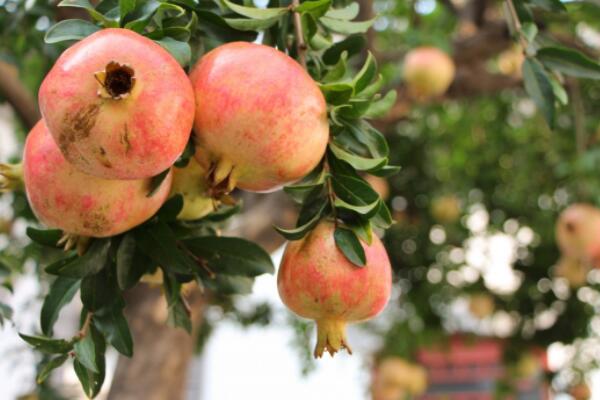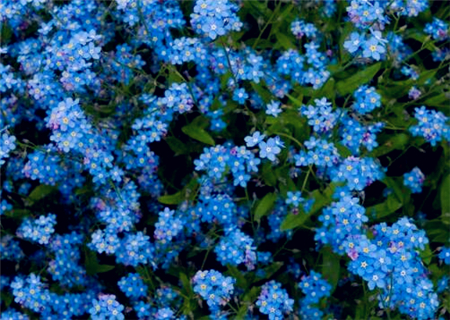How much is a Huanghua pear sapling? How to plant it? Why is it so expensive? (with efficacy)
Huanghua pear tree generally refers to Jiangxiang, produced in Hainan, China (central and southern). Born in mid-altitude open forest on hillside, forest edge or open land next to landmarks. It has high economic value and medicinal value. So, how much is a Huanghua pear sapling? How to plant it? Why is it so expensive? It is understood that the number of Huanghua pear seedlings in Hainan is rare, so the price is also very high. in recent years, after market speculation, the sales price is even higher than that of red sandalwood, but the price of Huanghua pear seedlings is not too expensive. the price of an one-year-old sapling is about 30 yuan to 40 yuan, and there should be a discount if the wholesale price is carried out.

How to plant Huanghua pear?
1. Planting season: afforestation in spring is generally chosen. But the difference of temperature in different places is different: in the rainy areas in spring, such as Fujian, Guangdong and Guangxi, it is suitable for afforestation from March to June, or from July to August with bagged seedlings if there is a water source for irrigation, and the planting season in Hainan Province is relatively late. August-September is the best afforestation season. If bare root afforestation is used, the root system must be protected in the process of transportation, and the survival is more guaranteed.
2. Site conditions: the opposite conditions of Dalbergia odorifera are not strict. It is suitable for growth in steep slopes, ridges, bare rocks, arid and barren areas. This tree species is a positive tree species. In plain or hilly areas at low elevations, barren mountains and wastelands below 600m above sea level and sunny slopes and semi-sunny slopes of harvesting land, the perennial temperature is higher, the dry and wet season is obvious, and the soil is brown latosol and lateritic red soil. can be afforestation.
3. Land selection and planting: select flat land, sunny or semi-sunny sloping land, cutting land below the hillside for afforestation and planting in front of the house, clean up the miscellaneous according to the routine before planting, refine the mountain, open a horizontal zone with a slope of more than 20 degrees, dig pits with a depth of 40-50cm each, plant after backfilling topsoil and fertile soil, and step on solid leaching to fix the root water after planting. The row spacing is 3 × 3 or × 3 × 2m.
4. Tending of young trees: in the same year after planting, the soil was loosened and weeded once at the end of the rainy season (September). The tending management should be strengthened within 3 years from the second year. The method is to take seedlings as the center to remove shrubs and weeds in the range of 1 meter in diameter around the tree plate, combined with soil cultivation and fertilization. Once a year before and after the rainy season, it is better to add one more time in the middle if possible. Fertilization: combined with soil loosening, weeding and hole expansion, 150-200g compound fertilizer was applied to each plant to promote the growth of trees, make them close into forests as soon as possible, and reduce weeds. Pruning: Huali has low branches and strong lateral branches. pay attention to pruning branches and cultivate good rod shape when tending. However, it should be noted that in the first-2 years of the young forest, do not cut off all the lateral branches too early and excessively. It is necessary to leave more branches and leaves to increase photosynthesis. With the growth of the tree age, the young forest gradually grew taller and then gradually pruned upward. In this way, it is beneficial to increase the photosynthesis of the leaves of the young forest, and contribute to the growth of the young forest and the development of the root system.
5. Prevention and control of main diseases and insect pests: there are common branch and leaf disease spots in the seedling stage and young tree stage of Dalbergia odorifera. It spreads rapidly in the rainy season, and in severe cases, the whole leaves are black, resulting in a large number of leaves falling off, seriously affecting the growth of young trees. In addition, anthracnose will also occur on young leaves and shoots, and anthracnose will also occur on young leaves. Small round brown disease spots appear on the leaves, with black spots on them, and black on the young branches, gradually drying up. The above two diseases were sprayed with 70% mancozeb wettable powder or 5% methyl topiramate 500 times, once every 7 days for a total of 2 times 3 times, all of which had a good control effect. Artificial young forest, the main harm is longicorn beetles, damaged young trees often cause wind or death. It is the most effective way to control longicorn beetles by using 90% trichlorfon or 50% phoxim 300 / 400 times liquid, injecting it from the wormhole with a veterinary syringe and then sealing the hole with cotton balls during the larval stage.
Why are Huanghua pear trees so expensive?
1. Raw materials are scarce
It is well known that the raw materials of Hainan Huanghua pear are endangered, and it is even more difficult to obtain old materials. With the rise of the price, it is absolutely impossible to take the material that used to be 20,000 yuan per jin without 60,000 yuan. The Li people who go to the deep mountains of the Li nationality to find materials, eating and sleeping in the wind, searching day and night, it is very likely that the bamboo basket is in vain. The scarcity of materials has become a key point of the high price of Hainan Huanghua pear.
2. Gambling trees
Many Huanghua pear lovers in Hainan have started tree gambling activities in cooperation with non-governmental organizations. Hainan Huanghua pear gambling tree risk is extremely high, one knife poor, one knife rich, nothing to lose. Many Hainan Huanghua pears, which are artificially planted by farmers and have not been cultivated for many years, have been cut down, which greatly reduces the yield of Hainan Huanghua pears and increases the decreasing rate of Hainan Huanghua pears.
3. Buyer's market demand
Now there are more and more collectors in Hainan Huanghua pear market, relatively speaking, the seller market is very tight. The supply of goods is decreasing, and the demand is increasing, which makes the demand of Hainan Huanghua pear more popular.
With the improvement of the government's awareness of protection in recent years, Huanghua pear, as a second-class national protection of sandalwood, has sent troops to guard and strictly prohibit theft. Various producing countries in Southeast Asia have also launched natural forest protection measures to restrict log exports.
The effect and function of Huanghua Pear
The main results are as follows: 1. Huanghua pear tree has excellent wood quality, light yellow sapwood, slightly loose heartwood, reddish brown heartwood, heavy and dense texture, which is good for high-quality furniture; fragrant, can be used as spice; root heartwood is named Jiangxiang for medicinal use. It is not only a good analgesic, but also for the treatment of knife wound bleeding.
2. Jiangxiang can be used as a green ornamental plant, placed in families, schools, enterprises, shops, hotels, restaurants (indoor furnishings are not regional). Dalbergia odorifera can also be used as an urban greening tree species.
Time: 2019-03-21 Click:
- Prev

What does an evergreen pomegranate tree look like? Blossom and bear fruit, long black spot, what medicine does heart-eating insect hit? How to manage maintenance?
Pomegranate is also known as pomegranate, mountain leaf, Dan Ruo, Ruo pomegranate wood, Jinlu, Jinpang, Tulin, Tianju, sweet and sour, with insecticidal, dysentery and other effects. So what does the pomegranate tree look like? Blossom and bear fruit, long black spot, what medicine does heart-eating insect hit? How to manage maintenance? According to the data of Myrtle,
- Next

"Don't forget me" Don't forget me when will I blossom? How do you plant seeds? How much is a bunch of flowers?
Do not forget me, is the Arnebia family do not forget my plant. Chinese mainland has been planted in Jiangsu, Northwest, North China, Sichuan, Yunnan, Northeast and other places. So when will I blossom? How do you plant seeds? How much is a bunch of flowers? The details are as follows: forget-me-not is suitable for growing in temperate zones.
Related
- Fuxing push coffee new agricultural production and marketing class: lack of small-scale processing plants
- Jujube rice field leisure farm deep ploughing Yilan for five years to create a space for organic food and play
- Nongyu Farm-A trial of organic papaya for brave women with advanced technology
- Four points for attention in the prevention and control of diseases and insect pests of edible fungi
- How to add nutrient solution to Edible Fungi
- Is there any good way to control edible fungus mites?
- Open Inoculation Technology of Edible Fungi
- Is there any clever way to use fertilizer for edible fungus in winter?
- What agents are used to kill the pathogens of edible fungi in the mushroom shed?
- Rapid drying of Edible Fungi

